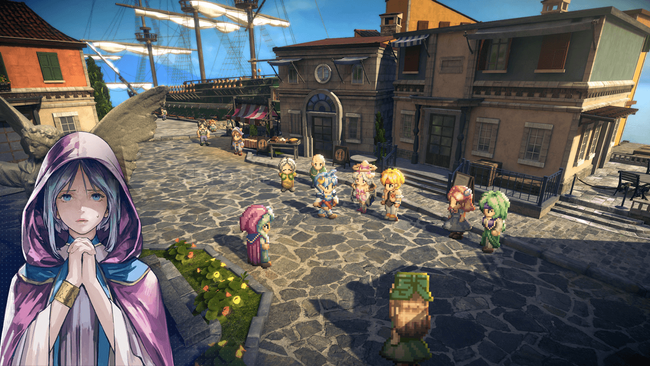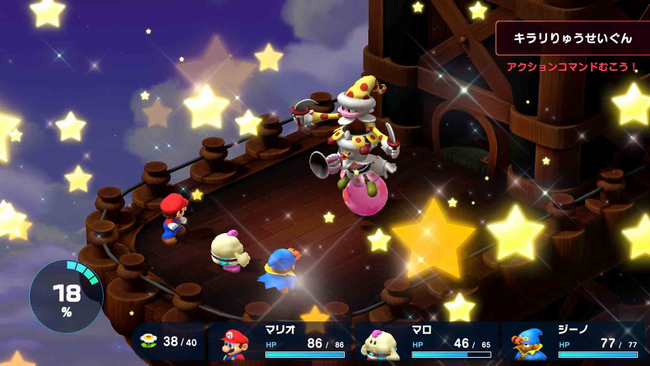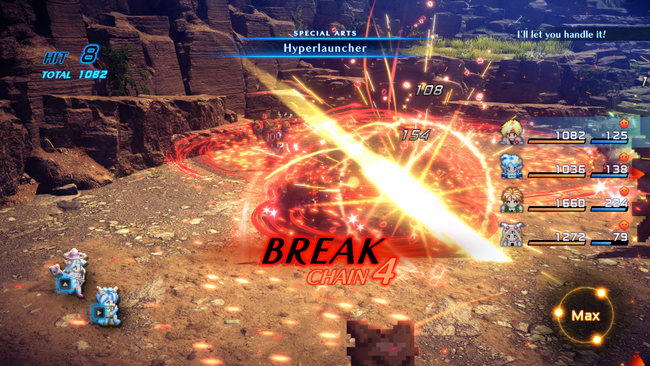
Move over, remasters! Remakes are taking over.
2023 has been a great year for video games, and RPGs have been no exception. Between Final Fantasy XVI, Starfield, Octopath II, a little game called Baldur's Gate 3, and plenty of indies, it is clear fans of the genre have enough to satiate even the hungriest gamer. As we approach the inevitable discourse over which games should be considered Game of the Year, I've spent most of my gaming time over the last month with two new-ish games. Both games - Star Ocean The Second Story R and Super Mario RPG - are remakes of classics from the 1990s which I personally adore. The positive reception to both games is a sharp contrast to the onslaught of half-hearted remasters or bare-bones ports we've been subject to. These well-received games reveal a simple truth: a loving hand and understanding of what made the original game great in the first place goes a long way in making a remake. Luckily for players, it's a truth the development teams at Gemdrops and ArtePiazza recognized when refreshing these classics.
.jpg)
Super Mario RPG, the last SNES game released in the West, was an iconic mashup of Mario’s platforming adventure gameplay with the turn-based RPG mechanics popularized by Final Fantasy. While it never received a true sequel, its RPG spirit was carried on in the Paper Mario series as well as the Mario & Luigi games. Star Ocean The Second Story was the series' debut in the West during the console's RPG boom in the late 1990s. Boasting voice acting, action combat, a bevy of recruitable characters, and plenty of endings, it was a high point for the console - and series - that hasn't been matched since. Aside from being solid games, they're now both relatively hard to come by. Mario RPG was last available on the now-shuttered Wii U eShop, while Star Ocean 2 was previously remade and released for the PSP in 2009. While both games were easy to recommend, it was difficult to actually find the games and hardware to play them.
That changed in November, first with Star Ocean on November 3, with Mario RPG following two weeks later. Both games have been well received, and in no small part due to these iterations honoring the legacy of the original games while also making their own tweaks and changes. While not every change is arguably necessary, they make the games more palatable to a younger generation who may not have experienced them before, or older gamers who may not have the patience for the original games' quirks. Fear not, it is still entirely possible to break the hell out of Star Ocean 2 early on. Likewise, a certain secret boss of Super Mario RPG is still sitting behind that locked door in Monstro Town for those who dare. Mario RPG in particular has a few added post-game contests for players to enjoy.

Both games have a unique approach to graphics. Mario RPG takes the isometric 3D graphics - impressive for the time on the SNES - and beautifully recreates the aesthetic with a modern sensibility. The announcement trailer for the game was a loving wink to the original opening, featuring the famous sequence of Peach sitting in a bed of flowers before revealing the glow-up of the remake. That initial shock is replicated a handful of times as indelible memories of this game have been re-created with a modern sheen that oddly looks closer to how I remember the game looking nearly twenty years ago than how it actually looked during a recent replay. The addition of a handful of story cutscenes, as well as Team Attacks are a lovely, if imperfect, touch. There are no faux-scanlines or other options to give a haphazard “retro” look, which is personally a relief. The game looks sharp, just like you might remember.
Star Ocean masterfully recreates the pre-rendered backgrounds of the original game with an update for 2023. Individual blades of grass sway in the wind, and the water effects are well-animated. Yet the actual character and enemy sprites themselves did not receive these updates. Instead, we are presented with what appears to be the PSX spritework of these characters. They look exactly like I remember, and again with no odd filters or re-designs. On paper this might seem like a harsh juxtaposition, but in practice it is another grand visual flourish. Both games are able to successfully leverage nostalgia in remaking the visual presentation, and it works all too well.

The same approach is taken to sound design. From the start, both games allow players to choose the original compositions or updated arrangements. I generally prefer the original soundtrack when replaying these games - it contributes to the sense of nostalgia, after all - so I found these additions to be respectful and thoughtful, especially with Star Ocean. The characters and game looked and sounded the same, but updated for the type of experience I am expecting in 2023.
The improved user interface and quality of life changes in both games make them significantly more palatable as well. Both games endorse fast travel from the onset, making the backtracking easier to deal with, and include map markers to make it easier to determine where to go to further the story or engage in extra content. These menus include homage to the original games while moving towards modern design and aesthetic. Keeping track of Private Actions was much easier in Star Ocean this time around. Likewise, auto-save in Super Mario RPG is a well-advertised improvement.

These changes, and a host of other QOL improvements, make the game significantly easier to keep track, enjoy, and eventually finish – all without making significant changes to the narrative. The result? Definitive versions of older games that retain enough to appeal to everyone. It's even better that I don't need to break out a console old enough to have a Master's Degree just to play the game. Gamers have been subjected to endless remasters, some lazily prepared in a seemingly quick and dirty cash-in. Players with fond memories of the original Star Ocean The Second Story R and Super Mario RPG are not getting rush job ports of the originals, hampered by lazy filters and poor optimization leaving the visuals with a muddled Vaseline appearance or a frame rate inexplicably slower than the original. Instead, it's easy to feel the reverence the developers have for these projects. They lean into the essence of the game, applying modern sensibilities and a whole lot of love.
Playing these games the last month, I had the impression the developers respect these games, and grew up with them as well. That love is not only fostered in these games, it is poured into them. It's that joy and respect for the original experiences that help make these remakes sing. It is something that cannot be emulated.